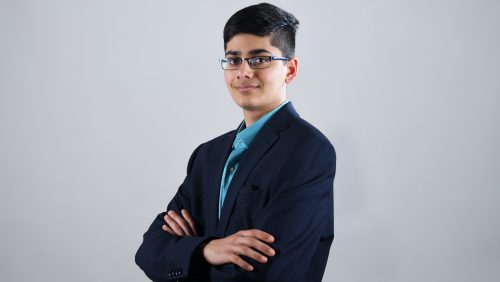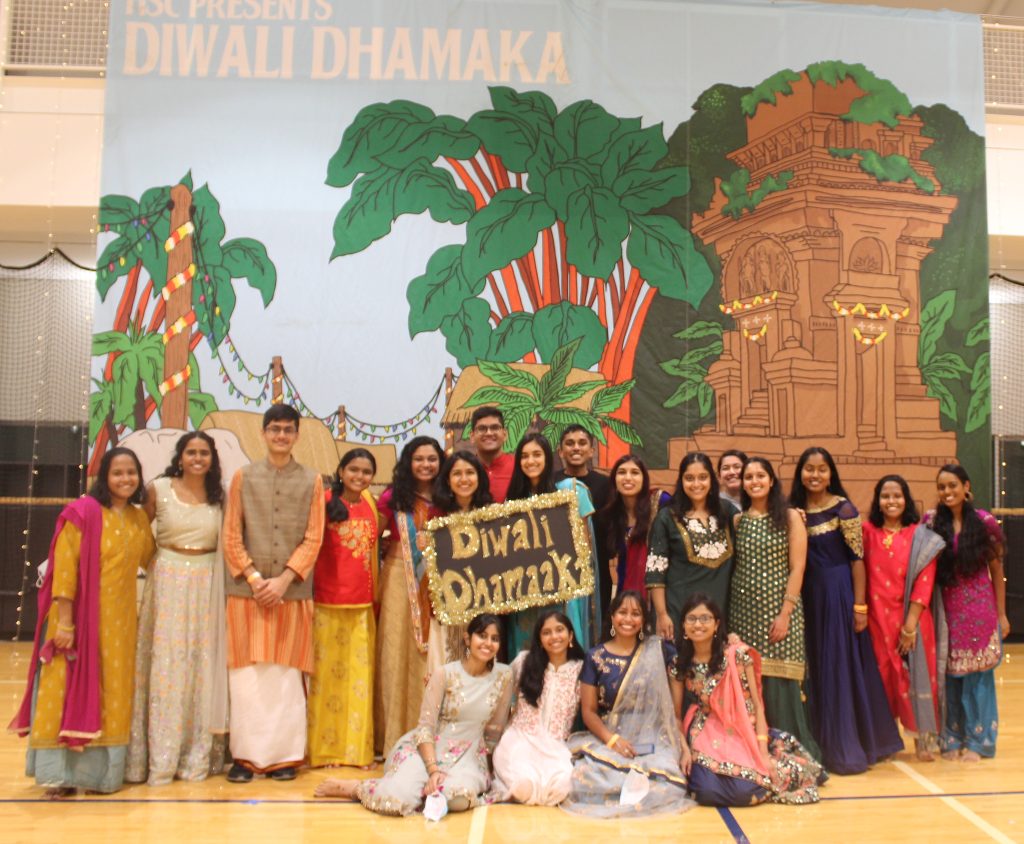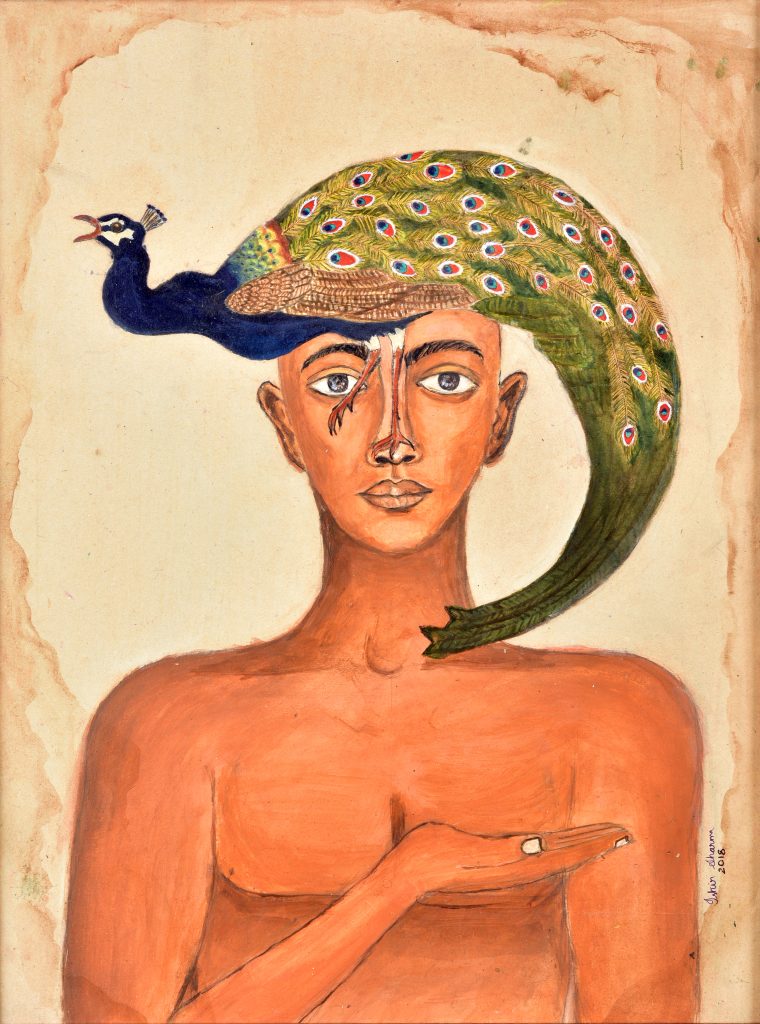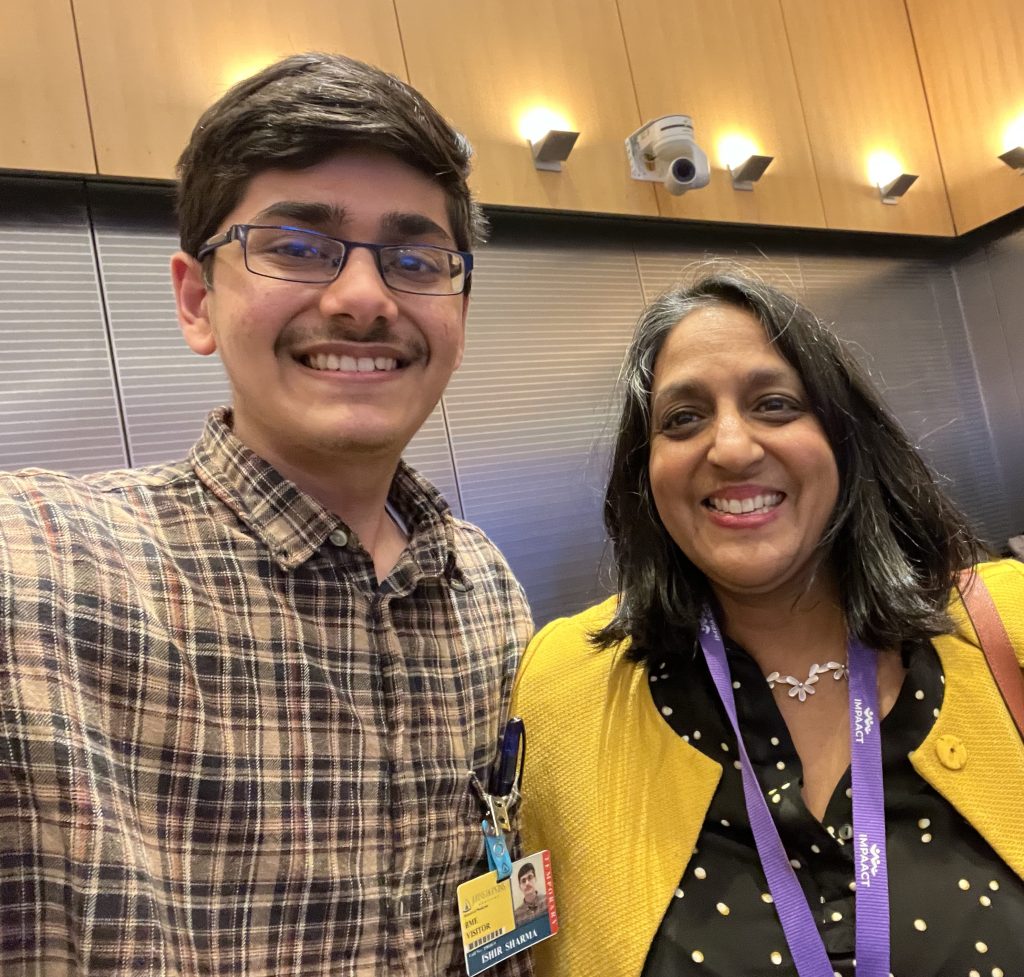
Ishir Sharma Student Spotlight
“Being an international student is a huge part of my identity.”
 Ishir Sharma, a Bengaluru native, can easily be defined as a modern-day Renaissance man. He’s the treasurer for the Hindu Students Council, a member of the Johns Hopkins Biomedical Engineering Design Team, a digital health researcher at the Armstrong Institute, a patient support volunteer at the Johns Hopkins Hospital, a co-founder of the Art for Cancer project, and a student intern for the Gupta-Klinsky India Institute.
Ishir Sharma, a Bengaluru native, can easily be defined as a modern-day Renaissance man. He’s the treasurer for the Hindu Students Council, a member of the Johns Hopkins Biomedical Engineering Design Team, a digital health researcher at the Armstrong Institute, a patient support volunteer at the Johns Hopkins Hospital, a co-founder of the Art for Cancer project, and a student intern for the Gupta-Klinsky India Institute.
He notes that he joined the Hindu Student Council the very first day he became a member of the John Hopkins community. “It’s been it’s been a great part of my journey here and I’ve learned a lot from my work at the Hindu Students Council. It gives me a way to keep connected with diversity on campus and with the international students at Hopkins,” he said. “In my second year at Hopkins I worked as a volunteer, helping with events, onboarding new international students. Then I had the opportunity to work as a treasurer this year, and I’m continuing that for the rest of the semester. I enjoy being a part of that.”
Ishir’s work volunteering didn’t begin at Hopkins. While in high school he volunteered at a local hospital helping conduct oral cancer and breast cancer screenings. That evolved into a continuing relationship with that hospital to conduct more programs, one of which was Art for Cancer.
 “Art for Cancer started as a one-off event at the hospital, and it evolved into a network that allowed me to do more events. Most of these were targeted at lower-resource communities in the city and outskirts,” he said. “It’s an established program now. That was a really impactful part of my high school journey before I came to Hopkins.”
“Art for Cancer started as a one-off event at the hospital, and it evolved into a network that allowed me to do more events. Most of these were targeted at lower-resource communities in the city and outskirts,” he said. “It’s an established program now. That was a really impactful part of my high school journey before I came to Hopkins.”
Merging Technology and Healthcare
Ishir is currently working toward his combined Bachelor’s/Master’s in Engineering at JHU and is planning for the completion of the combined degree to be his first major milestone in his career path.
“Biomedical engineering really stood out to me where I can get both the technical side of engineering, my love for math, and my interest in healthcare and biology, which I’ve had since high school. I was able to choose a field that had the intersection of both those areas,” he said. “I knew I wanted to go into healthcare, but not a specific position. I really enjoy having that blend and having the flexibility of any path in the future from this field.”
“I’m working on a project with a digital health researcher at Bayview to come up with a standardized way to evaluate different medical platforms. We’re looking at either electronic health record platforms or data collection platforms, like COVID dashboards, and comparing their performances,” he explained. “One of the other things I’m doing is working as a lab manager for the biomedical engineering department. As a lab manager, I help work with biomedical engineering students on different software to learn how to use those.”
 He notes Drs. Amita Gupta and Indu Bhushan as being great advisors to him during his education. “I’ve learned a lot from them about the possibilities of career options related to healthcare in India. That’s inspired me towards something that I know I can do– serving India in some way.”
He notes Drs. Amita Gupta and Indu Bhushan as being great advisors to him during his education. “I’ve learned a lot from them about the possibilities of career options related to healthcare in India. That’s inspired me towards something that I know I can do– serving India in some way.”
“GKII can be more than a network of researchers, but also a network of students and alumni. It would be awesome if we could have that grow together.”
Among his other accomplishments and volunteer duties, Ishir is also a student intern at GKII. He explained that he reached out to Dr. Gupta out of interest.
“I read a lot about what the India Institute was doing, and I had an aspiration to give back. I’m from India and it’s always been something I’ve wanted to do, giving back to where I came from, especially around global health. I saw this as an opportunity for me to learn more about how Hopkins is working with India,” he said. “Being able to work in the field in low-resource settings in India, that’s something I see myself doing. There’s a lot to do in this space of healthcare, with a country like India and its scale and sheer volume of population. Being a part of that transformation is something that I’m really eager for.”
Most recently, Ishir created a database for GKII listing over 400 faculty members doing work in India.
“I learned a lot about how diverse the Hopkins faculty researchers are in respect to India,” he said. It was it was an extensive and time-consuming process,” he said. “One of the biggest takeaways from the project was that it’s not always about Google searching. Sometimes the easiest way is to reach out to the faculty directly and asking them about their work in India. That really helped me because gain insight. It helped to go a little bit deeper and get that information.”
He’s also spearheading new ideas for student engagement with the institute.
“I’m currently working to create an icebreaker session sometime this year to get students on board and see how students across various clubs want to get involved. We’re meeting with the leadership and general membership, seeing if we can get those students to attend and have a discussion. That’s something that I’m pretty excited about working on,” Ishir said. “GKII is a great starting point for students who want to make a difference. It’s a great platform and I think it would be awesome to have as many students from Hopkins join in, take part, and help GKII grow as an organization.”